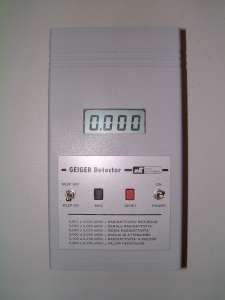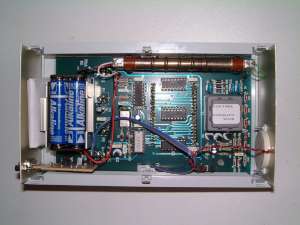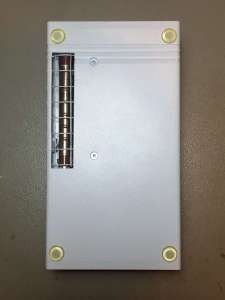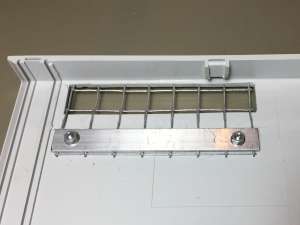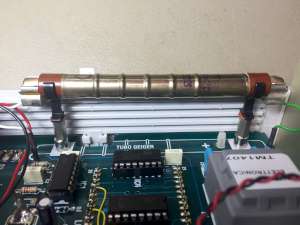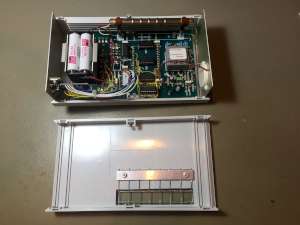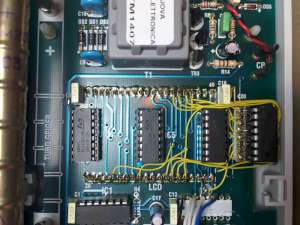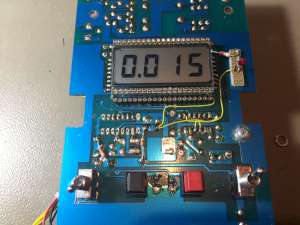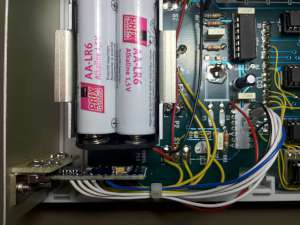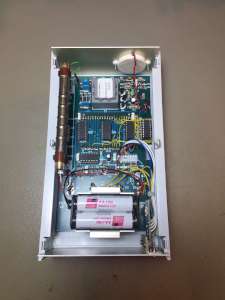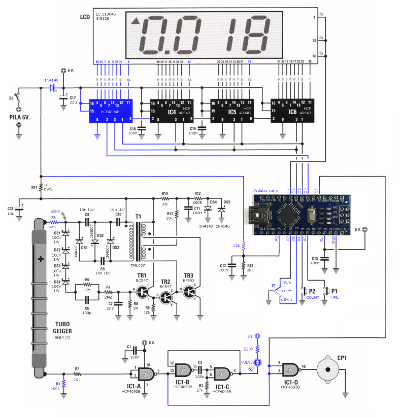The new firmware
Replacing the old microcontroller with an Arduino Nano was the easiest thing
to do.
Also because I could reuse many parts of the code I already wrote for the
twin-tube counter.
So, with little effort I could have the dead-time compensation, the PC
communication interface, the conversion from CPM to mR/h and μSv/h, the
low voltage alarm, and so on.
Pulses generated by the tube are shaped by IC1-A and arrive on line D2.
This line internally supports interrupt capabilities (INT0) and allows
counting all the pulses (falling edge) regardless of what the processor is
doing.
The LC513040 LCD display must be AC driven to avoid harmful electrolysis
phenomena in the liquid crystals.
Its data-sheet specifies that the frequency must be between 30 and
200 Hz.
I choose to drive it at 50 Hz by programming the microcontroller to
rewrite the four CD4094 100 times per second and invert all outputs each
time.
To fit large numbers on the four digit display, when the value exceeds 9'999,
it's divided by 1'000, the decimal point is shifted accordingly and a little
triangle in the top left corner will tell the user about the extra 1'000
factor.
So, for example, "^15.67" actually means 15'670.
The firmware (program) used for this application is available here (as
freeware): lx1407-firmware.zip
(19,704 bytes).
Il nuovo firmware
Sostituire il vecchio microcontrollore con un Arduino Nano era la cosa
più semplice da fare, anche perché mi ha permesso di
riutilizzare una buona parte del codice che avevo già scritto per il
contatore a due
tubi.
Questo ha permesso di implementare con poco sforzo la compensazione del tempo
morto, l'interfaccia di comunicazione con il PC, la conversione in CPM, mR/h
e μSv/h, la gestione della batteria scarica, e via dicendo.
Gli impulsi provenienti dal tubo, debitamente squadrati da IC1-A arrivano
sulla linea D2 che internamente supporta la funzione di interrupt INT0 e
permette di conteggiare tutti gli impulsi (fronte discendente)
indipendentemente da ciò che il processore sta facendo.
Il display LCD tipo LC513040 deve essere pilotato in corrente alternata per
evitare dannosi fenomeni di elettrolisi nei cristalli liquidi.
Il data-sheet specifica che la frequenza deve essere compresa tra 30 e
200 Hz.
Io ho scelto di pilotarlo a 50 Hz, facendo in modo che il
microcontrollore riprogrammi i quattro registri CD4094 100 volte al secondo
ed invertendo ogni volta i valori di tutte le uscite.
Per indicare numeri grandi sul display a quattro cifre, quando il valore
oltrepassa 9'999, questo viene diviso per 1'000, la virgola viene spostata e
un triangolino in alto a sinistra indica il fattore 1'000.
Così, per esempio, "^15.67" significa 15'670.
Il firmware (programma) usato in questa applicazione può essere
scaricato qui (freeware):
lx1407-firmware.zip
(19,704 bytes).
